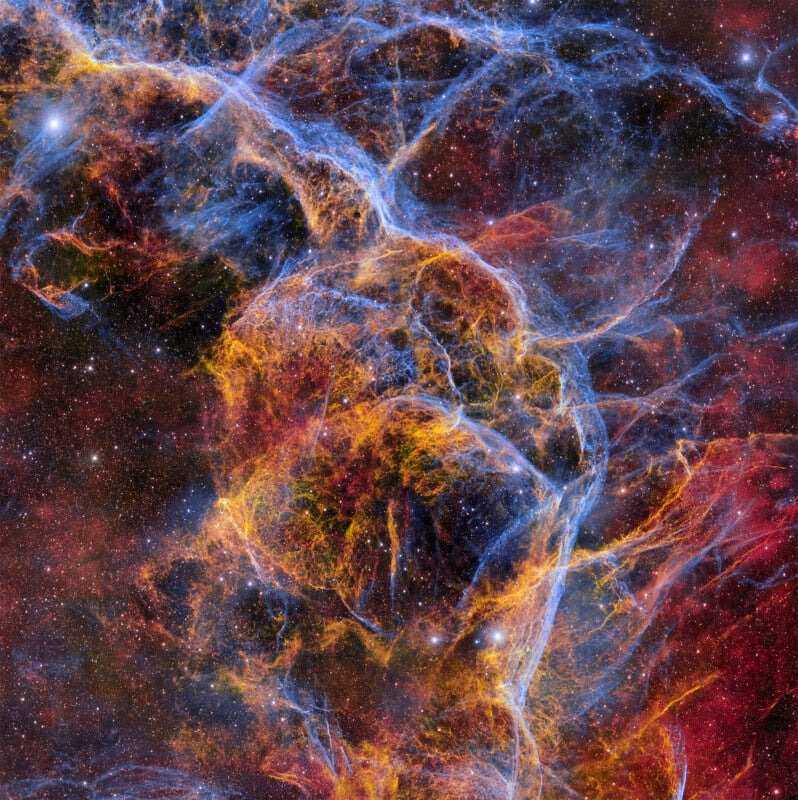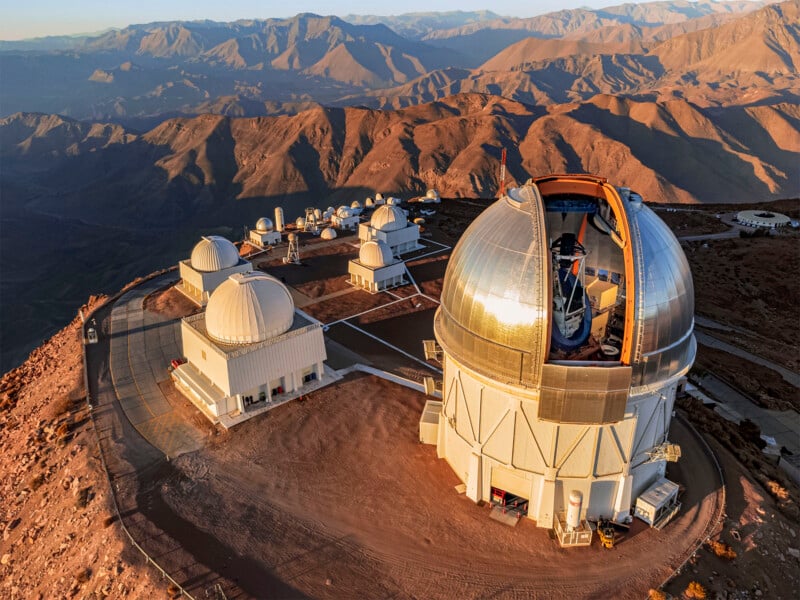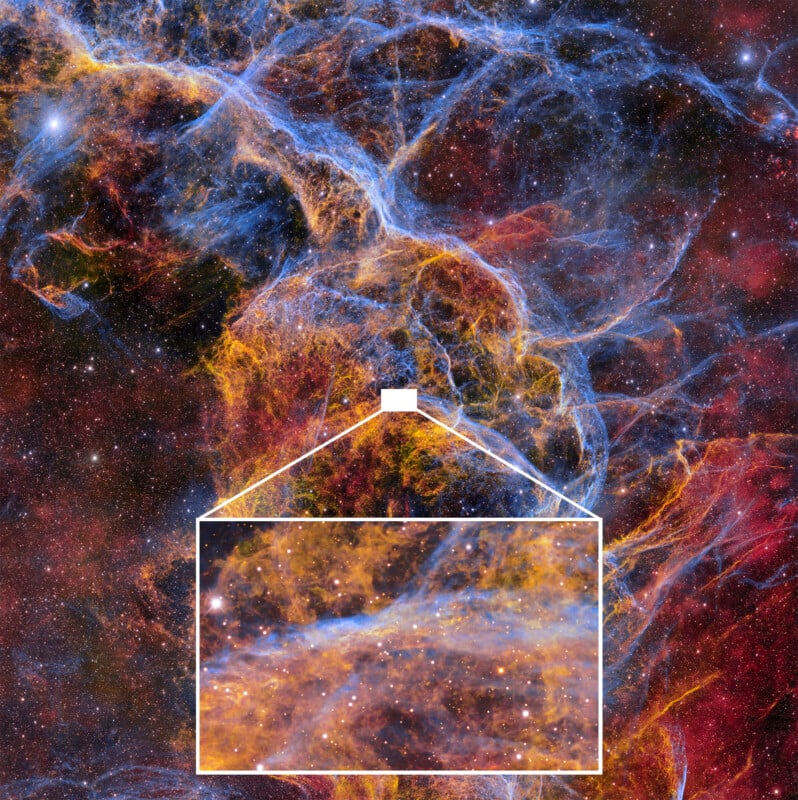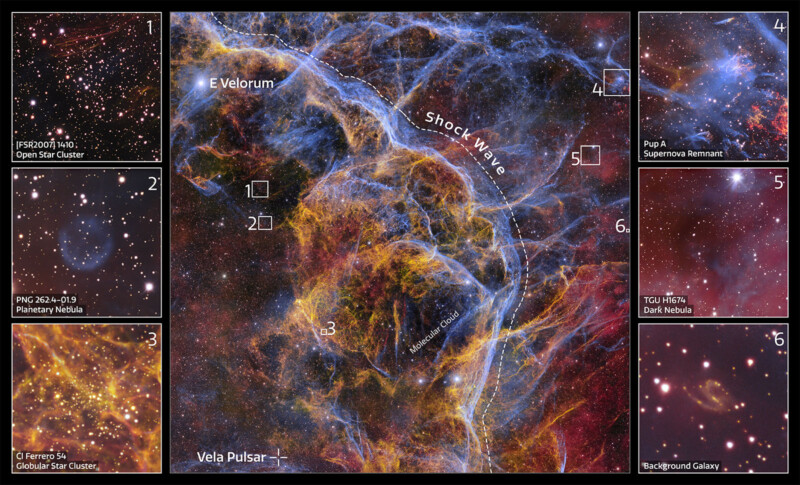The Detail in This New 1.3-Gigapixel Photo of a Supernova is Incredible

Using the remarkable 570-megapixel Dark Energy Camera (DECam), astronomers have made a 1.3-gigapixel image of the ghostly Vela Supernova Remnant. The beautiful, detailed, and colorful image is the largest DECam image ever at 35,786 by 35,881 pixels, putting even the highest-resolution medium-format interchangeable lens cameras to shame.
The Vela Supernova remnant, located about 800 light-years away from Earth, is the cosmic corpse of a massive star that exploded 11,000 years ago. It is one of the closest supernova remnants to Earth and the perfect subject for the remarkable Dark Energy Camera.
The supernova is a vast cosmic structure about 100 light-years across. For context, one would have to travel around the Earth 200 million times to have traveled a single light-year.
Built by the Department of Energy and mounted on the National Science Foundation’s Victor M. Blanco 4-meter Telescope at the Cerro Tololo Inter-American Observatory in Chile, the new image is one of the largest ever captured of the Vela Supernova Remnant and the highest-resolution photo ever captured by the DECam.

The state-of-the-art wide-field camera comprises a grid of 62 charge-coupled device (CCD) image sensors. Light is reflected by the 13-foot (four-meter) wide mirror, a precisely shaped aluminum-coated piece of glass that weighs about the same as a semi-truck. This light is guided through a corrective lens of 3.3 feet (about a meter) across and onto the sensor grid. A single image recorded by this sensor array is 570 megapixels.
By combining multiple exposures, as astronomers did to create the new 1.3-gigapixel image of Vela, it’s possible to capture a remarkable amount of detail.

The color in this image was achieved using three specialized DECam filters, each allowing only a particular wavelength of light through. DECam has five filters in total. Each filter was attributed a specific color channel, red, yellow, or blue, and then stacked on top of each other to create the full-color image above.
While these colors are technically “false” insofar as they were not recorded by the DECam, which, like other specialized astronomy cameras only records black and white images, the colors assigned to each wavelength correspond to the way human vision sees colors, a process called chromatic ordering.
By shooting images across wavelengths ranging from 400 to 1,080 nanometers — the visible spectrum is about 400 to 700 nm — the DECam can see cosmic structures that would be invisible in optical light. At infrared wavelengths, it’s possible to see through some of the interstellar medium, comprised of gas and dust, and see the glowing tendrils of gas that were created 11,000 years ago by the supernova explosion.

The unnamed and long-gone star left a lot of material behind that is still propagating throughout the interstellar medium. Some of the gas and dust may help form a new star someday.
In the meantime, scientists can learn a lot about the lifecycle of stars by studying supernova remnants like Vela; if that means more gigapixel photos like this, all the better.
Image credits: CTIO/NOIRLab/DOE/NSF/AURA, Image Processing: T.A. Rector (University of Alaska Anchorage/NSF’s NOIRLab), M. Zamani & D. de Martin (NSF’s NOIRLab)